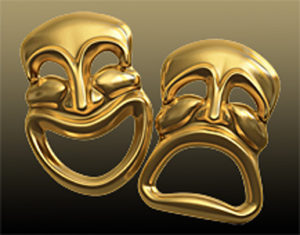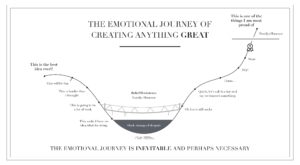Understanding the Creative Process
The notion that creativity is a process that follows stages was first attributed to Graham Wallas, a psychologist who wrote The Art of Thought. In his book, based on the accounts of famous artists and their experiences, he theorized that there are four stages to the creative process: (1) preparation, (2) incubation, (3) illumination, and (4) verification or revision. This model considers the two different modes of thought both conscious and unconscious that come into play at different stages.
The preparation and revision is mainly the domain of the conscious mind. During the second stage, we effectively release conscious control and the problem is turned over to the unconscious where it incubates. Eventually this leads to the solution that emerges in what is called the illumination stage, often coming when we are least expecting it. In fact, many creative people report that illumination or inspiration comes to them during what is described as a half-waking state when they are either emerging from sleep in the morning or from an induced state of reverie. In addition, research at Stamford shows that taking a break and going for a walk is a prime way to bring on the inspiration. The creative process is completed by what is called the verification. Since I am involved in applying this to writing, we call it the manifestation or revision stage where we are actively writing and making changes to the story.
It was Malcolm Cowley, a novelist and literary critic, who applied the model directly to writing. He came up with the following mode;: ideation, incubation, first draft and revision. Cowley noticed that the first stage is usually focused on identifying the germ of the story or idea, which is followed by a period of what he called conscious meditation (incubation) that leads to the creation of a draft and finally is brought to completion in the revision(s). This model has been confirmed by writers and creative people who talk about how the idea for a book came to them as a breakthrough, a flash of inspiration after much preparation.
The bottom line is that these stages are a natural part of the creative process. They consider the way the mind and the different parts of the brain are involved in creative processing and working together naturally. The creative process can be likened to a dance between the conscious and the unconscious in consort with the imagination. Each one plays a role and takes the lead during different stages. The empirical research I did for my PhD supported the notion of stages to the creative process as an interplay between the conscious and unconscious mind, one that is not entirely linear but involves repetition, a back-and-forth or overlapping of the stages until the creative act, the journey, is completed.
The creative process is also fraught with emotions. Here is a helpful diagram that demonstrates that.
Writer’s block could then be regarded as a natural part of the process we need to learn how to overcome. This was also demonstrated in the research I did which worked with a Jungian psychological process called active imagination to help overcome the inner critic, the main antagonist to creativity. Helping writers to navigate the creative process is very much a part of the consulting work I do with writers.



 Good Stories
Good Stories